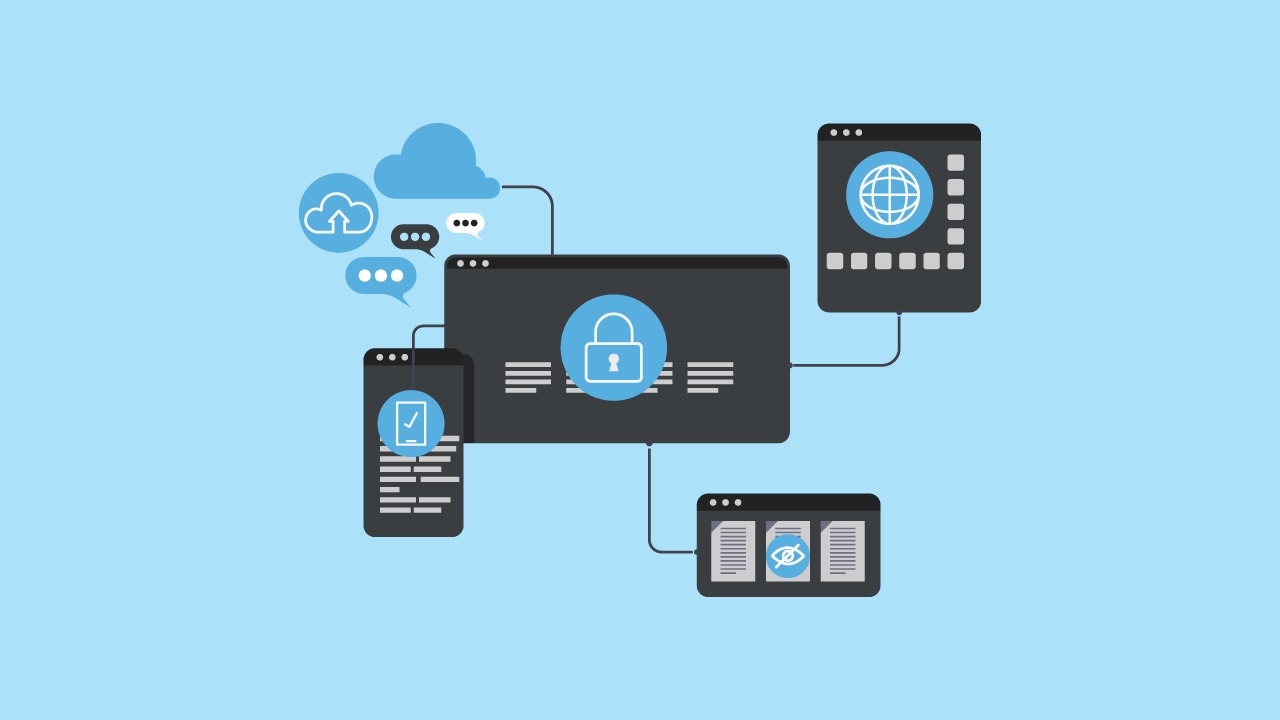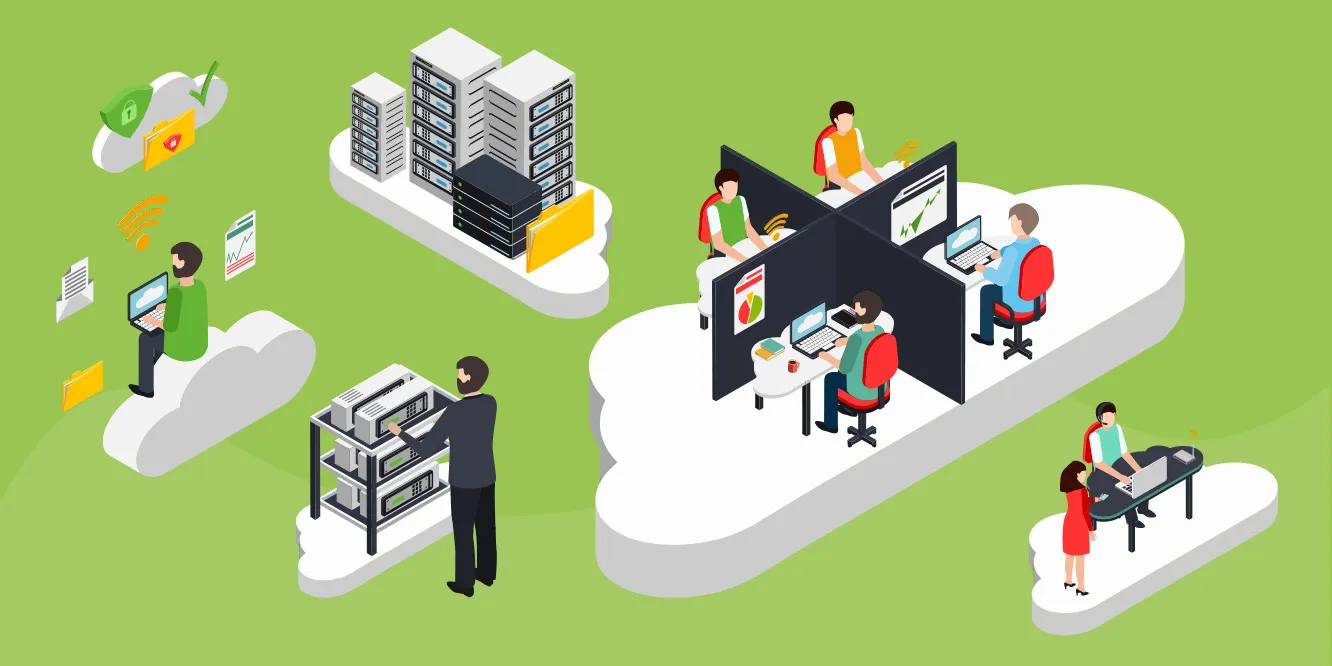SaaS vs PaaS vs IaaS: What You Need to Know with Examples

In the midst of constantly evolving technologies, we’re seeing a lot of fancy names and abbreviations being used. SaaS, PaaS, and IaaS are the three primary names amongst them. However, which one do you need? In this post, we aim to differentiate between these three therefore, let’s look at Saas vs Paas vs Iaas a little more closely.
Let’s begin.
Table of Content
- What is Software as a Service (SaaS)?
- SaaS Company Examples:
- SaaS: Advantages and Disadvantages
- What is Platform as a Service (PaaS)?
- PaaS company examples
- What is IaaS (Infrastructure-as-a-Service)?
What is Software as a Service (SaaS)?
SaaS is a cloud services model which allows users to connect and use applications off of the internet. You see SaaS examples everywhere in daily life. You log on to your Microsoft or Google account and you check email through a SaaS platform. Gmail is the prime example of a SaaS mail provider.
Let’s follow that up with the example of G Suite. The services are used as a business communication system throughout the organization. The business rents the G Suite and uses its infrastructure for their own operations.
The renting business doesn’t have the data centers.
Instead the owner of the service hosts the business data on their platform.
The owner also ensures the security of the applications. For businesses who want to get up and running without incurring costs, the SaaS model provides the ideal solution.
It works too. Let’s have the statistics speak for themselves.
A survey estimated that 96% of companies will be running on SaaS by the year 2023. [Finances Online]
Because of its agile nature and lack of start-up costs, 70% CIOs are positive about using SaaS applications for their cloud-based systems.
Due to the rampant increase in cybersecurity, 38% of companies have chosen to adopt cloud-based systems to improve disaster recovery.
These statistics, and many more, show how much of an influence a platform SaaS is.
SaaS Company Examples:
Amazon Web Services (AWS)
The company has now expanded beyond its ecommerce offering to support cloud-based IT resources and applications. Amazon web services focuses on a pay-as-you-go pricing model.
They provide over 70 services which includes server management, database, networking, analytics, deployment, management, and the IoT.
Freshworks
In terms of CRM software, Freshworks is providing efficient services based on the SaaS model. Within their software offering, they host plenty of business services such as Freshchat, Freshdesk, Freshsales, Freshteams, Fresh Market, and more. Users utilize the Freshworks platform for their own business process while the software is rented out to the user.
Dropbox
Dropbox’s services allow you to manage your personal and professional documents in one place. With Dropbox storage, you can seamlessly make edits on the go and store your files in a secure manner.
In addition to that, other users within the company can manage the files – making edits and changes to the files as they go. All the data within the company is stored in the cloud, so businesses and individuals don’t face any issues regarding collaboration.
SaaS: Advantages and Disadvantages
Until now, we’ve been praising the SaaS model for everything that it does well. Like everything out there, there are, of course, advantages and disadvantages to the model.
In the next section, we’ll be discussing advantages and disadvantages of SaaS.
SaaS Advantages
Cost
- Subscription based software licenses make the understanding and allocation of the software a lot easier.
- Because of SaaS’s steady expenditures, it becomes easier for companies to account for additional costs.
- With multiple pricing tiers (Amazon, Dropbox), it becomes a lot easier for small businesses to avail such services without having to worry about paying for the entire features of a SaaS service. For context, take the pricing tiers of Freshworks.
Maintenance
- Businesses prefer to use SaaS for their processes because it doesn’t require them to create a maintenance team for managing the software.
- The SaaS software provider takes care of all the maintenance and security of the software. The users just use the software.
- Security issues, patches, updates, and improvements are all taken care of by the software provider.
- Your employees won’t have to worry about patches, and using older software. If the company has subscribed to the service, then the employees will be using the latest software.
Mobility
- With the recent lockdowns and security breaches, employees are looking for more flexibility in the way they work. SaaS business provides that in the perfect manner.
- SaaS applications only require you to have a password and username, that’s all. All you need is an internet connection and all your workplace files can be accessed. Dropbox and Google Drive are perfect examples of this. All your files, stored in one place, accessible from anywhere.
- The mobility is another example of why SaaS is gaining popularity as the days are progressing.
SaaS Disadvantages
Security
- SaaS users aren’t responsible for maintaining the security. It’s the job of the owner of the software. Google updates its products for security patches and what not.
- While SaaS is secure in and of itself, companies invest a lot of money to ensure their product doesn’t face any security breaches.
- The security problems can arise from the users of the SaaS application. Endpoint security implementation is a must-have for companies to ensure their operations aren’t prone to malware.
Contractual obligations
- Of course, whenever you register a SaaS software, you sign a contract with the service provider. For companies, managing licenses is an important aspect because if you do not, companies can impose heavy penalties for overusing licenses past their expiration dates.
- To ensure that you do not lose any data, companies need to be on top of these contracts. This ensures that there is no breach of compliance for the contract in any way.
- For businesses, Software Assets Management (SAM) should be a major pillar since through this, they would know the licenses that they have, and how many businesses are entitled to it.
Loss of control
- While the control of the SaaS application is in the hands of the company using it, the SaaS software provider still monitors the activity of the business. Lack of compliance for a business leads the SaaS software provider to audit the companies’ activities.
- To avoid financial and compliance problems with the service provider, you should have a legal team present with you. However, this is in the rarest of cases.
Also Read The Best Online CRM Software Of 2021
What is Platform as a Service (PaaS)?
You don’t buy the service; you buy the platform entirely. It comes with all the tools, software development kits, and operating systems to help you create the platform.
You might be tempted to think that PaaS might look like server-less computing but it’s actually not.
Yes, the infrastructure might look very similar considering all the servers are owned by the platform provider, but there are differences in the architecture and business model.
The primary benefit of the PaaS model is that it eliminates the servers, leading to seamless development.
This is a second tier below SaaS. When in SaaS, you are using the software services, with PaaS, you are using the platform to build the software.
There are several companies leading the PaaS model. Let’s look at them, shall we?
PaaS company examples
PaaS Examples
SAP Cloud
In the PaaS category, there is no denying the impact of SAP Cloud. SAP Cloud isn’t a platform in and of itself. Instead, it’s a collection of tools that lets you build applications for a variety of different purposes. With over 1300 apps all distributed across the cloud, you can build just about anything with SAP Cloud.
SAP has powerful analytics tools, IoT, and cybersecurity applications. Again, all the data is stored in the cloud and is protected by SAP itself. The SAP Cloud platform is used across the world by companies in all industries.
Microsoft Azure
The forerunner to SAP is Microsoft Azure. Undoubtedly one of the best platforms out there for software development. Used widely across the world, the platform supports application development from the first piece of code to end deployment without any issue.
The benefit of using Microsoft Azure is that it allows you access to ASP.Net, PHP, and Node.JS. It allows you the ability to develop mobile applications, cybersecurity software, and other applications that scale appropriately.
Heroku
Heroku is a self-contained PaaS system, which provides space for integration, with plenty of ecosystems accessible within the platform. It’s an intuitive platform, and user-friendly UI that provides ease of development.
This platform is used by most budding developers to deploy their development projects to the cloud. It’s a suitable example of a PaaS company. However, when we talk about scalable PaaS, then it’s not a viable solution.
The reason Heroku is so well-liked by developers is because of its integration with code repositories like GitHub and Git. On top of that, it’s regularly updated and patched and compatible with a host of programming languages.

PaaS Advantages
Now, there are certain benefits and drawbacks of using services on the PaaS model. With it, of course, you will be able to develop stellar software applications quickly and efficiently. This accelerated development environment helps companies to focus on the solutions only.
The following is a listicle of the benefits you can gain from PaaS.
- Cost Effectiveness: Purchasing hardware like servers and facing downtimes aren’t a concern. The platform takes care of all that.
- Time Saving: With no time wasted implementing server and IT architecture, PaaS allows you a faster time to market.
- Future Proofing: Since the company takes care of maintaining the IT architecture, businesses can work easily knowing the server management is in the hands of the right people.
- Improved Security: Of course, the companies providing PaaS services will be focused towards providing an improved security apparatus that takes care of the services.
- Custom Solutions: With PaaS you can build custom applications without worrying about scalability since most PaaS providers dynamically scale the product.
PaaS Disadvantages
With the advantage of PaaS, there are also obvious disadvantages to using the platform. Now that doesn’t mean they are impervious. They are, for a better part, manageable with planning.
Let’s look at them, shall we?
- Vendor dependency: Like the case for Heroku above, PaaS software depends entirely on the vendor itself.
- Unneeded features: With multiple features in a single PaaS solution, customers might not want to pay for a specific feature.
- Compatibility: When used with existing development platforms, compatibility issues might arise.
- Security: Platform providers are responsible for the maintenance and organization of the platform itself.
What is IaaS (Infrastructure-as-a-Service)?
Cloud Infrastructure Services, aka Infrastructure as a Service (IaaS) is a digital services model where users host and run their cloud applications without worrying about maintenance and infrastructure costs.
IaaS companies sell servers in different geographical locations on which businesses can host their applications or websites. The benefit of IaaS is that it allows companies to scale up and scale down their resources depending on the applications.
In addition to that, it doesn’t let you manually provision your physical servers in data centers.
IaaS Examples
Amazon EC 2
Amazon’s Elastic Compute Cloud (AWS – EC2) is a cloud computing service based on the IaaS model. It allows companies to scale up or scale down their server resources depending on their usage.
The level of control the platform provides allows you to work with minimal friction and breaks – thus allowing for quicker development cycles and improved performance.
These tools allow you to build failure proof applications backed by the Amazon Platform.
Microsoft Azure
Microsoft Azure works on all fronts. SaaS, IaaS, and PaaS are all aspects covered by the platform. But here’s the thing: Microsoft’s IaaS focuses on quicker delivery, touting alliances, analytics, and much more.
They’ve not focused on the technical benefits but have rather shifted their focus towards business benefits. Moreover, they’ve significantly moved towards making IaaS more affordable for users.
Google Cloud Infrastructure
Similar to Amazon and Microsoft, Google doesn’t shy away from providing superior cloud IaaS. It applies a variety of different technologies that is aimed at providing quicker application development and overall better infrastructure.
Google has a massive data infrastructure already present so it makes sense that they decided to provide cloud infrastructure for their IaaS. The problem with Google, however, is that it lags behind the amount of support AWS, EC2, and Microsoft has.
The search engine still vies for competition in that field.
IaaS Advantages
For companies looking to quickly deploy their applications with scalability then IaaS presents the best solution. There are certain advantages to using IaaS as a platform for businesses.
- Pay for usage only: The benefit of using IaaS is that you only pay for the features that you’re working with. Usage based pricing is a primary advantage of IaaS.
- Cost effective: Following up from the previous example, it’s extremely cost-effective, allowing you to operate on a monthly operational expense.
- Improved security: The primary benefit of using IaaS is that it provides users with additional layers of security courtesy of the platform itself.
- Future proof: With the quality of the companies mentioned above, it shouldn’t come as a surprise that this provides a future proofing for your business.
- Speed boost: The infrastructure gives you considerable speed in development and deployment of your applications.
IaaS Disadvantages
While there are some beneficial aspects of using SaaS, there are also hurdles and challenges as well. Let’s look at them, shall we?
Some of the challenges include the following:
- Costs: These are dependent on the usage. However, with time, they add up, which can be hard to account for.
- Processes: If the core infrastructure changes, then the business using it might have to adjust to it.
- Security: While the IaaS providers manage the security essentials, companies have to deploy security measures to their products too.
Conclusion:
In our comparison of IaaS, PaaS, and SaaS, we didn’t mention which one you should choose?
We didn’t because at the end of the day, it’s up to personal preference on what an individual business wants from a digital services model.
Codup offers custom software development and web development services for your business. If you’re looking to set yourself apart from the competitors, then you should definitely select Codup.



